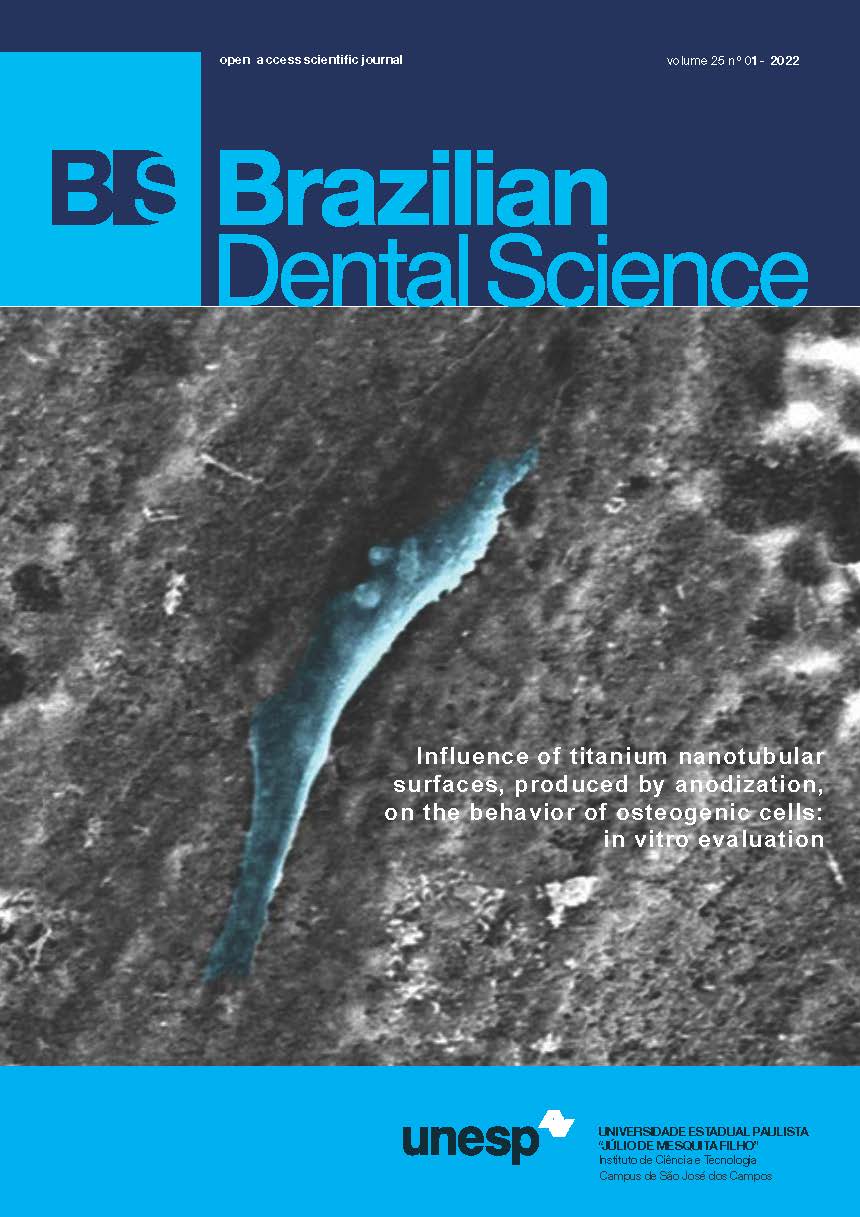Evaluation of desensitizing efficacy of nanohydroxyapatite on the treatment of dentine hypersensitivity following ultrasonic scaling: a randomized controlled trial
DOI:
https://doi.org/10.4322/bds.2022.e2737Abstract
Objective: This randomized controlled trial aimed to compare nanohydroxyapatite with fluoride on managing
post ultrasonic scaling Dentine hypersensitivity (DH). Material and Methods: Thirty patients (aged 20-50
years) with post ultrasonic-scaling DH were included in this study. The sample was randomly divided into three
equal groups of 60 teeth each: the first group received nanohydroxyapatite material, the second group received
fluoride material and the third group received sterile water as a placebo (controls). The materials were applied
once for each patient. All patients were instructed to rate the level of pain before treatment, and after 1 hour, 24
hours, 2 weeks and 1 month on the numerical rating scale (NRS). The Kruskal-Wallis test, Mann-Whitney tests,
linear regression analysis were used for the statistical analysis. Significance level was set at 0.05. Results: Both
nanohydroxyapatite and fluoride were successful in reducing pain associated with DH when compared with the
placebo in subsequent follow-ups (p < 0.05). However, one-hour and one-day post application, nanohydroxyapatite
could reduce hypersensitivity pain more effectively than fluoride (p < 0.05). Conclusion: Nanohydroxyapatite
material was found to be significantly more effective in reducing the DH that followed ultrasonic scaling one-hour
and one-day post application as compared to fluoride and sterile water. Both fluoride and nanohydroxyapatite
had similar effect on DH after two-weeks and one-month after application.
KEYWORDS
Dentine hypersensitivity; Desensitizing agent; Fluoride; Nanohydroxyapatite; Ultrasonic scaling.
Downloads
Downloads
Published
Versions
- 2022-03-29 (3)
- 2022-01-24 (2)
- 2022-01-24 (1)
How to Cite
Issue
Section
License
Brazilian Dental Science uses the Creative Commons (CC-BY 4.0) license, thus preserving the integrity of articles in an open access environment. The journal allows the author to retain publishing rights without restrictions.
=================




























